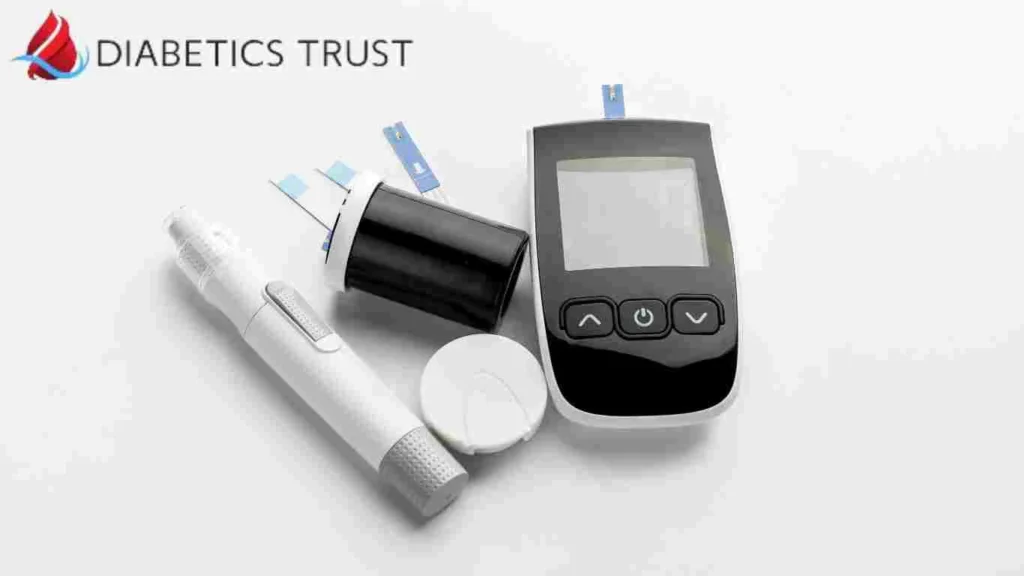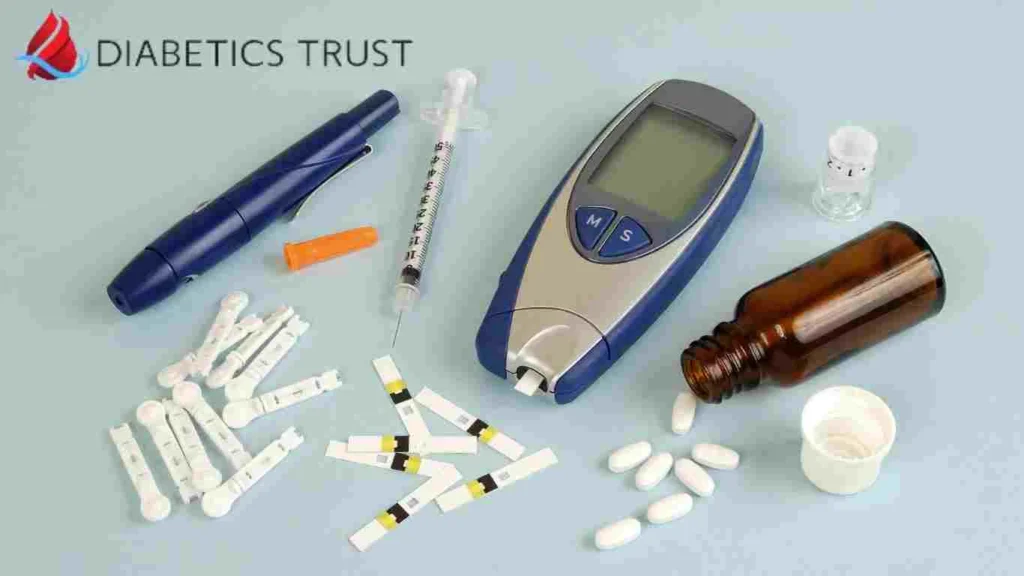Yes, many insurance plans cover the cost of diabetic test strips, but the extent of coverage can vary based on the specific policy and provider. Diabetic test strips are indispensable tools for individuals with diabetes, allowing them to accurately and effectively monitor their blood sugar levels at home.
Diabetes, a pervasive condition, necessitates consistent oversight to ensure blood sugar levels are within the desired range. The role of diabetic test strips in this monitoring process cannot be overstated. These small, disposable items, when paired with a glucose meter, offer precise readings, empowering patients to make informed decisions about their health.
Ease of Use: Their user-friendly nature means patients can avoid frequent doctor visits, saving both time and resources.
Instant Feedback: Immediate results from these strips enable timely interventions if sugar levels deviate from the norm.
Patient Empowerment: The ability to self-monitor provides a sense of control over one’s condition.
Given the recurring need for these strips, the associated costs can accumulate over time. Therefore, understanding insurance coverage becomes paramount. This article will explore the intricacies of insurance policies, shedding light on coverage criteria and offering insights to help you navigate this complex domain.
The Cost of Diabetic Test Strips
Diabetic test strips, while small, carry a significant price tag, especially when considering the recurring nature of their purchase. For those without insurance, these costs can quickly add up, posing a substantial financial burden.
Average Cost Without Insurance
Brand A: $1.20 per strip
Brand B: $1.00 per strip
Brand C: $0.85 per strip

Table 1: Average Cost of Popular Diabetic Test Strip Brands
| Brand | Cost per Strip | Monthly Cost (Based on 4 tests/day) |
|---|---|---|
| Brand A | $1.20 | $144 |
| Brand B | $1.00 | $120 |
| Brand C | $0.85 | $102 |
For many, these costs can be daunting, especially when factoring in other diabetes-related expenses such as glucose meters, insulin, and regular doctor visits.
Financial Implications for Diabetic Patients
Recurring Expenses: With the recommended frequency of blood sugar testing being multiple times a day, the monthly expenditure on test strips can be substantial.
Additional Supplies: Beyond test strips, patients often need lancets, glucose meters, and other supplies, further escalating costs.
Impact on Treatment Adherence: High costs can sometimes lead to reduced testing frequency, compromising effective diabetes management.
It’s evident that managing diabetes is not just a health challenge but also a financial one. This underscores the importance of insurance coverage, which can significantly alleviate these costs. For more insights on managing diabetes effectively, explore our article on the role of telemedicine in diabetes management.
Insurance Coverage for Diabetic Supplies
Diabetes management requires a comprehensive approach, and test strips are a pivotal component of this regimen. But how does insurance step in to alleviate the financial burden? Let’s delve into the intricacies of insurance coverage for diabetic supplies.
General Principles of Insurance Coverage for Medical Supplies
Coverage Variability: Not all insurance plans are created equal. Coverage for diabetic supplies can vary widely based on the type of plan, provider, and even geographic location.
Deductibles and Co-pays: Even if an insurance plan covers diabetic test strips, patients might still be responsible for a deductible or co-pay. It’s essential to understand these out-of-pocket costs.
Documentation Requirement: Insurance companies often require documentation, such as a doctor’s prescription or proof of medical necessity, to approve coverage for certain supplies.
Limitations: Some insurance plans might have limitations on the number of test strips they cover per month, especially if they deem the quantity to be more than “medically necessary.”
Over-the-Counter vs. Prescription Test Strips
Over-the-Counter (OTC) Test Strips: These are available without a prescription and can be purchased at pharmacies or online. While they might offer more flexibility, insurance typically doesn’t cover OTC test strips unless accompanied by a doctor’s note or prescription.
Prescription Test Strips: These are prescribed by a healthcare professional. Insurance is more likely to cover prescription test strips, especially if they’re deemed medically necessary. However, the coverage amount can vary.

Table: Comparing OTC and Prescription Test Strips
| Aspect | Over-the-Counter | With a doctor’s prescription |
|---|---|---|
| Availability | Pharmacies, online | With doctor’s prescription |
| Insurance Coverage | With a doctor’s prescription | Typically covered, but varies |
| Cost | Often cheaper, but out-of-pocket | Might be more expensive, but often offset by insurance |
For those seeking to understand the nuances of diabetes management and the role of community support, our article on the role of family and community support in diabetes management offers valuable insights.
Major Insurance Companies and Their Stance on Diabetic Test Strip Coverage
Managing diabetes is a long-term commitment, and understanding how major insurance companies approach the coverage of essential supplies like diabetic test strips can be a game-changer for many patients. Here’s a breakdown of some of the top insurance providers and their policies regarding diabetic test strip coverage.
1. Blue Cross Blue Shield (BCBS)
Coverage: Generally covers diabetic test strips under most of its plans, especially when deemed medically necessary.
Conditions/Restrictions: Quantity limits might apply. A prescription from a healthcare provider is typically required.
2. Aetna
Coverage: Offers coverage for diabetic test strips in many of its health plans.
Conditions/Restrictions: This might require prior authorization. The frequency of testing and the type of diabetes can influence the number of strips covered.
3. Cigna
Coverage: Diabetic test strips are covered under most plans.
Conditions/Restrictions: A prescription is necessary. There might be a cap on the number of strips covered per month.
4. UnitedHealthcare
Coverage: Provides coverage for test strips, but the extent can vary based on the plan.
Conditions/Restrictions: Some plans might have preferred brands, and using non-preferred brands could result in higher out-of-pocket costs.
5. Humana
Coverage: Diabetic test strips are generally covered.
Conditions/Restrictions: Coverage might be contingent on the patient undergoing diabetes self-management training.

Table: Overview of Major Insurance Companies and Test Strip Coverage
| Insurance Provider | Coverage | Conditions/Restrictions |
|---|---|---|
| BCBS | Yes | Quantity limits, Prescription required |
| Aetna | Yes | Prior authorization, Type of diabetes |
| Cigna | Yes | Prescription, Monthly cap |
| UnitedHealthcare | Varies | Preferred brands, Plan-dependent |
| Humana | Yes | Diabetes training |
For a deeper dive into the intricacies of diabetes and its management, consider exploring our detailed guide on the environmental factors contributing to diabetes.
Medicare and Diabetic Test Strip Coverage
Diabetes management can be a significant concern for seniors, and understanding how Medicare approaches the coverage of diabetic test strips is crucial. Medicare, the U.S. government’s health insurance program for seniors, offers specific provisions for diabetic supplies. Here’s a comprehensive look at how Medicare covers diabetic test strips.
Medicare Part B (Medical Insurance)
Coverage: Covers diabetic test strips as durable medical equipment (DME). Beneficiaries can get up to a 3-month supply at a time.
Cost: After meeting the yearly deductible, you’ll pay 20% of the Medicare-approved amount.
Conditions/Restrictions: Requires a prescription from a doctor or other healthcare provider enrolled in Medicare. The supplier of the test strips must also be enrolled in Medicare.
Medicare Part D (Prescription Drug Coverage)
Coverage: While Part D primarily covers prescription drugs, it can also cover certain over-the-counter diabetic supplies, including test strips.
Cost: Varies based on the specific Part D plan. It’s essential to check the plan’s formulary or list of covered drugs.
Conditions/Restrictions: Coverage and costs can vary between different Part D plans. Some plans might have preferred brands or might require prior authorization.

Table: Medicare Coverage for Diabetic Test Strips
| Medicare Plan | Coverage | Cost | Check the formulary, Possible prior authorization |
|---|---|---|---|
| Part B | Yes | 20% after deductible | Prescription required, Approved suppliers |
| Part D | Varies | Plan-dependent | Check formulary, Possible prior authorization |
For those navigating the complexities of diabetes, understanding insurance intricacies can be a lifesaver. To further enhance your knowledge of diabetes management, our article on the role of family and community support in diabetes management offers valuable insights.
Factors Influencing Insurance Coverage
Managing diabetes requires consistent monitoring, and the coverage of diabetic test strips by insurance companies can significantly ease the financial burden. However, several factors can influence whether and how much of the cost is covered. Let’s delve into the primary determinants that insurance companies consider when covering diabetic test strips.
1. Type of Diabetes
Type 1 Diabetes: Often diagnosed in children and young adults, this form of diabetes requires regular insulin injections. Given the constant need for monitoring, insurance companies might be more inclined to cover more test strips for Type 1 diabetics.
Type 2 Diabetes: This form is more common and is often linked to lifestyle factors. Depending on the severity and the treatment plan, the frequency of testing might be less than that for Type 1, influencing the number of strips covered.
2. Doctor’s Prescriptions and Recommendations
Prescription Requirement: Most insurance plans, including Medicare, require a valid prescription to cover diabetic test strips. The prescription often specifies the frequency of testing, which in turn determines the number of strips covered.
Recommendations: A doctor’s recommendation emphasizing the need for frequent monitoring can influence insurance coverage. For instance, if a patient’s blood sugar levels are unstable, a doctor might recommend more frequent testing, leading to higher coverage.
3. Frequency of Testing
Daily Monitoring: For those who need to monitor their blood sugar levels multiple times a day, insurance might cover a higher number of strips.
Occasional Monitoring: If the diabetes is well-managed and only occasional monitoring is required, fewer strips might be covered.
Table: Key Factors and Their Influence on Coverage
| Factor | Influence on Coverage |
|---|---|
| Type of Diabetes | Type 1 might get higher coverage due to frequent testing needs. |
| Doctor’s Prescription | A valid prescription is often mandatory. More strips might be covered based on the doctor’s recommendation. |
| Testing Frequency | Daily monitoring can lead to higher coverage compared to occasional testing. |
Path When Insurance Doesn’t Cover Test Strips
Diabetic test strips are essential for many individuals to monitor and manage their blood sugar levels. But what if your insurance doesn’t cover them, or the coverage is insufficient? Here are some strategies and alternatives to consider:
1. Health Savings Accounts (HSAs) and Flexible Spending Accounts (FSAs):
HSAs: These are tax-advantaged medical savings accounts available to taxpayers enrolled in high-deductible health plans. Funds contributed to an HSA aren’t subject to federal income tax, allowing you to save for medical expenses, including diabetic test strips.
FSAs: Offered by employers, FSAs let employees set aside pre-tax dollars for out-of-pocket healthcare costs. While they have a “use it or lose it” policy, they can be a valuable resource for covering test strip expenses.
2. Discounts and Patient Assistance Programs
Manufacturer Discounts: Many test strip manufacturers offer discounts or rebates. It’s worth visiting their official websites or contacting their customer service for potential savings.
Patient Assistance Programs: Some organizations and nonprofits offer assistance programs for individuals who can’t afford their diabetic supplies. Researching local and national programs can yield valuable resources.
3. Consider Generic or Alternative Brands
Cost-Effective Options: Generic test strips can be significantly cheaper than brand-name strips. While they must meet the same FDA standards, it’s essential to ensure they’re compatible with your glucose meter.
Alternative Brands: Some lesser-known brands might offer test strips at a reduced cost. Always check reviews and consult with your healthcare provider before making a switch.

Table: Strategies to Afford Diabetic Test Strips Without Insurance
| Strategy | Often cheaper than brand-name strips but ensures compatibility with your meter. |
|---|---|
| HSAs & FSAs | Tax-advantaged accounts to save for medical expenses. |
| Discounts & Assistance | Manufacturer offers and patient assistance programs can reduce costs. |
| Generic Brands | Often cheaper than brand-name strips but ensure compatibility with your meter. |
Claim Process for Diabetic Supplies
Managing diabetes requires not only regular monitoring and medication but also an understanding of the insurance claim process to ensure you’re reimbursed for your expenses. Here’s a step-by-step guide to help you navigate the often-complex world of insurance claims for diabetic supplies:
1. Understand Your Policy
Coverage Details: Before purchasing diabetic supplies, review your insurance policy to understand what’s covered and what’s not. This can include test strips, glucose meters, insulin pumps, and more.
Deductibles and Co-pays: Familiarize yourself with any deductibles or co-pays associated with your policy. Knowing these can help you budget effectively.
2. Keep All Receipts and Documentation
Proof of Purchase: Always keep receipts for any diabetic supplies you purchase. These will be crucial when submitting a claim.
Doctor’s Prescription: Ensure you have a valid prescription for the supplies. Some insurance companies require this as proof of medical necessity.
3. Fill Out the Claim Form
Details Matter: Complete the insurance claim form with all required details. Be as accurate as possible to avoid any delays or rejections.
Attach Necessary Documents: Along with the form, attach your receipts, prescription, and any other required documentation.
4. Address Challenges
Rejected Claims: If your claim is rejected, review the reason. It could be due to missing information, expired prescriptions, or policy exclusions.
Appeal Process: If you believe your claim was wrongly denied, most insurance companies have an appeal process. Familiarize yourself with this and consider appealing if necessary.
5. Stay Organized
Track Claims: Keep a record of all claims submitted, including dates, amounts, and any correspondence with the insurance company.
Follow-up: If you haven’t received a response within the expected timeframe, follow up with the insurance company to check the status of your claim.

Table: Steps to Successfully Claim Diabetic Supplies
| Step | Action | Tips |
|---|---|---|
| 1 | Understand Policy | Check for specific exclusions. |
| 2 | Keep Documentation | Store receipts and prescriptions safely. |
| 3 | Fill Claim Form | Ensure accuracy to avoid rejections. |
| 4 | Address Challenges | Understand the appeal process. |
| 5 | Stay Organized | Track and follow up on claims regularly. |
Diabetic Test Strips vs. Other Diabetic Supplies
Diabetes management requires a comprehensive approach, involving not just medications but also regular monitoring. While diabetic test strips are essential for this monitoring, they are just one of the many tools in a diabetic’s arsenal. Let’s delve into how insurance coverage for test strips compares to other diabetic essentials:
Diabetic Test Strips
Purpose: Used in conjunction with a glucometer to monitor blood sugar levels.
Average Cost Without Insurance: Varies based on brand and quantity, but can range from $20 to $50 for a box of 50 strips.
Insurance Coverage: Many insurance policies cover test strips, but the amount covered can vary. Some might cover a month’s supply, while others might cover less.
Insulin
Purpose: Essential for regulating blood sugar levels in diabetics, especially those with Type 1 diabetes.
Average Cost Without Insurance: Can range from $150 to $400 per vial, depending on the type and brand.
Insurance Coverage: Insulin is typically covered by insurance, but co-pays can vary. Some policies might have higher co-pays for branded insulin compared to generic versions.
Glucometers
Purpose: Devices used to read the test strips and provide a blood sugar measurement.
Average Cost Without Insurance: Typically between $10 and $75, depending on features and brand.
Insurance Coverage: Many insurance policies cover glucometers, often with a prescription. However, coverage might be limited to specific brands or models.
Table: Comparative Coverage of Diabetic Supplies
| Supply | Average Cost | Typical Insurance Coverage |
|---|---|---|
| Test Strips | $20-$50/50 strips | Varies based on policy |
| Insulin | $150-$400/vial | Typically covered with varying co-pays |
| Glucometers | $10-$75 | Often covered with a prescription |
Conclusion
Understanding the nuances of insurance coverage for diabetic supplies is crucial for effective diabetes management. With the rising costs of healthcare, it’s essential to be well-informed about what your insurance covers and what it doesn’t. Always consult with your insurance provider and healthcare professionals to ensure you’re making the best decisions for your health. For more insights and guidance, consider exploring the environmental factors contributing to diabetes.
References
To ensure the credibility and trustworthiness of this article, we’ve sourced information from reputable studies, articles, and sources. Here are the references:





